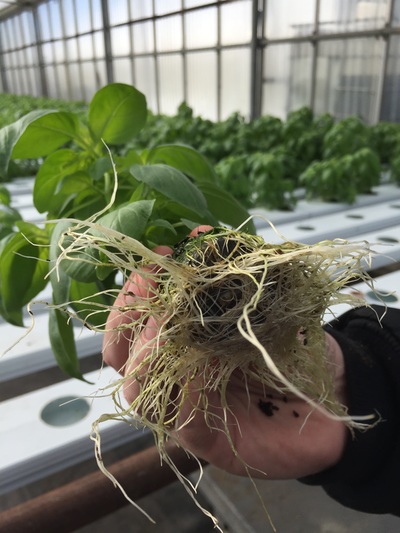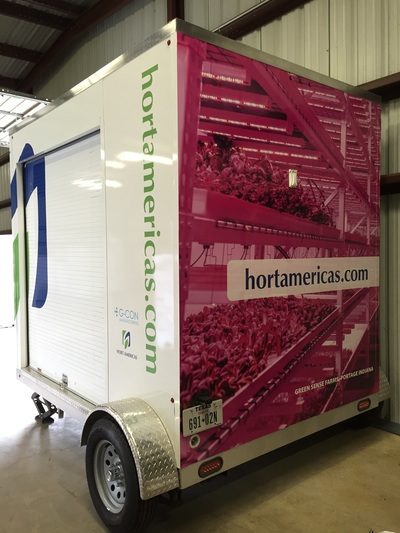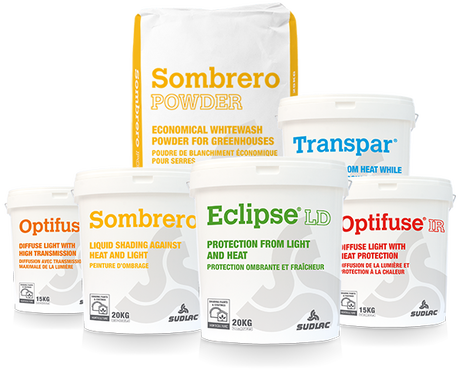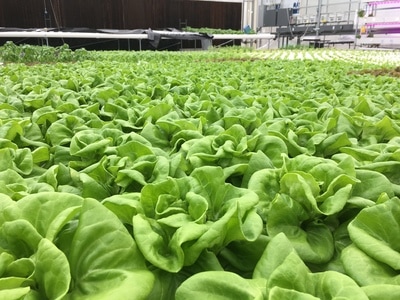
Built to serve our hydroponic vegetable, vertical gardening, and urban agriculture clients, Hort Americas is your pipeline to new technology from across the globe. With a strong connection to Europe, we are part of a worldwide team with strength in the international transport of everything from LED lighting to greenhouse consumables (examples: clips, hooks & twine, buckets / pots, and irrigation products).
FEATURED PRODUCTS
Nanobubbler generator delivers dissolved oxygen for improved plant growth
The Moleaer Inc. nanoBoost Nanobubble Generator delivers a supplementary source of dissolved oxygen that can significantly increase plant growth, improve size uniformity, reduce stress and prevent root diseases under extreme production conditions. Available from Hort Americas, the generator is ideally suited for horticultural applications including hydroponics, greenhouse irrigation and pond management.
The self-cleaning generator, which has no moving parts, produces oxygen-enriched nanobubbles that efficiently oxygenate an entire body of water and provides a reserve of oxygen encapsulated within the bubbles.
The self-cleaning generator, which has no moving parts, produces oxygen-enriched nanobubbles that efficiently oxygenate an entire body of water and provides a reserve of oxygen encapsulated within the bubbles.
Click below for quick and easy product advice:
The Grow Rack from Greentech Agro

Features:
- self-contained stainless steel rack system which can contain any number of vertical production and propagation levels.
- 6’ to 8’ tall modular rack system contains an appropriate number of crop-specific LED fixtures
- allows controllable, predictable and more robust growth, resulting in higher yields in a shorter period of time than conventional production methods
- can be remotely monitored and controlled
Organic vs. traditional hydroponic production: the top 3 differences
When it comes to changing from conventional to organic hydroponic production methods, there are three main areas that growers find most challenging.
GE Lighting has been offering horticultural LED lights to the North American market since 2011. “GE had been marketing horticultural LED lights in Japan prior to introducing them to the United States,” said Sharee Thornton, Product Manager at GE Lighting. “The reason for not introducing them sooner was the U.S. horticulture market was just starting to work with LEDs and GE was still developing the products specific to this market. We currently have three LED products that we are actively selling in the North American market and have additional products that are expected to come out during 2017. These would include an interlighting and toplighting products. “We have customers who operate vertical farms that are asking for a toplighting product. We are developing toplighting products for both vertical farms and for greenhouses.”
GE Arize Life
The primary application of the GE Arize Life LED light fixture is as a replacement for fluorescent lights typically found in tissue culture labs, growth chambers and testing labs. The fixture is available as a 2-, 4- and 8-foot light bar.
“This fixture has an integrated power supply, is IP66 rated and UL wet rated, which means it’s splash proof and easy to clean,” Thornton said. “If the fixture is used in a high moisture environment, it is easy to wipe clean. The operating temperature can be from 0ºC-40ºC (32ºF-104ºF). The fixtures can be daisy-chained from end to end or they can be daisy-chained with a jumper cable.”
Thornton said the Life fixture, which has a 5-year limited warranty, previously had a L80 of 36,000 hours. She stated GE has updated the fixture to a L90 of 36,000 hours. “This means at 36,000 hours a grower will still have 90 percent of the fixture light intensity available,” she said. “Other fixtures on the market are at L70 at 35,000 or 25,000 hours. That means at either 35,000 or 25,000 hours a grower is going to get 70 percent of the light intensity. A grower would have to replace the fixture if he loses 25-30 percent of the light intensity. Within that time period at 90 percent a grower may not have to replace the GE light fixture depending on what he is growing.”
Thornton said replacement of the fixtures will depend on where they are used. “If the fixtures are used in a vertical farm where they account for 100 percent of the supplemental light the plants are receiving, those are usually operated 16-18 hours per day,” she said. “The lights won’t be operating 24 hours because the plants have to have some time to rest. At a rate of 16 hours of light, seven days a week, the fixtures would run approximately 5,000 hours per year. The life expectancy of the fixtures would be around seven years. “This is what we typically see with some of our other applications. That is why we are able to offer a longer life expectancy. GE has been doing this with its other products. We know how to mechanically and electronically put the products together and run them at a higher efficiency in order to get a longer life. For growers who are using the lights for propagation rather than for a vertical farm, the life expectancy could be even longer if the lights aren’t run as often or as long.”
GE Arize Lynk
Side-by-side the Lynk and Life light bar fixtures look identical. The GE Arize Lynk fixture is available as a 4- and 8-foot light bar with plans to release a 2-foot bar in 2017. “The biggest difference between the two fixtures is the light intensity,” Thornton said. “The Lynk fixture can be used with vertical farms, in greenhouses, and growth chambers. Like the Life fixture, Lynk is IP66 rated and UL wet rated so it can be cleaned very easily. The Lynk fixtures can also be daisy chained from end-to-end. It has an independent driver so there is no additional driver required. There is also a plug so that it can be hot wired or it can be plugged in.” Thornton said because the Lynk and Life fixtures are lightweight, weighing less than 5 pounds, they are easy to install with mounting clips. “The mounting clips are attached with fasteners and then the fixtures are attached to the clips,” she said. “It is a very easy and fast installation. Hort Americas has done a video showing how easy the fixtures are to install.”
Thornton said GE offers similar light spectrums for both the Lynk and Life fixtures. “We have a reproductive spectrum, a vegetative and a balance. It depends on the goals of the growers,” she said. “The purple light is the ideal light for photosynthesis. Some growers want all purple and then they will move the crop out to harvest it. Others want white light so that they don’t have to move the product around. A grower can have a balanced pink, a balanced purple and a balanced white. “The reproductive spectrum with a higher red content is for the grower who wants to promote flowering and fruiting. The light spectrum for vegetative growth, which has a higher blue content, is for the grower looking at size or selling the product by the pound. If a grower really doesn’t know what light spectrum he wants or wants a spectrum for both reproductive and vegetative, he can choose the balanced spectrum of red and blue. The balance is the more common spectrum chosen because growers want both or don’t know and want to see what happens with the balanced spectrum. If the balanced spectrum doesn’t produce a beefy enough plant then the grower will look at the vegetative spectrum. Or if the plant didn’t flower or fruit as well as expected, then the grower would use the reproductive spectrum.”
Thornton said the Lynk fixture puts out about twice as much light as the Life fixture.
“A 4-foot reproductive Life fixture produces about 43.2 micromoles per second (μmol/s),” she said. “A 4-foot Lynk fixture produces 82.9 μmol/s. So it’s almost double. There would be a similar difference for the 8-foot fixtures too. An 8-foot reproductive Life fixture produces about 86.3 μmol/s and an 8-foot Lynk fixture is around 181.5 μmol/s. “We have seen a lot of the 8-foot fixtures used in vertical farms. Because of the insulation and they are so easy to clean, it is a lot easier to install the 8-foot fixtures. A lot of the vertical racks have five 8-foot sections so it works out perfect for the 8-foot light fixtures.”
GE Arize Greenhouse Pro
The GE Arize Greenhouse Pro is for photoperiodic control. It is set up on a BR30 platform.
“This bulb’s main application is to primarily control photoperiod and flowering in greenhouses,” Thornton said. “The light intensity of this bulb is 17.8 μmol/s. It is not as intense as the Arize light bar fixtures, but for its application it is very competitive with similar bulbs on the market. Its life expectancy is L90 at 10,000 hours. It is 90 percent at 10,000 hours. “We have some trials going on at Michigan State University and expect to have some results coming out in this year so that we can help growers use this bulb efficiently.”
For more information:
Hort Americas
www.hortamericas.com
GE Arize Life
The primary application of the GE Arize Life LED light fixture is as a replacement for fluorescent lights typically found in tissue culture labs, growth chambers and testing labs. The fixture is available as a 2-, 4- and 8-foot light bar.
“This fixture has an integrated power supply, is IP66 rated and UL wet rated, which means it’s splash proof and easy to clean,” Thornton said. “If the fixture is used in a high moisture environment, it is easy to wipe clean. The operating temperature can be from 0ºC-40ºC (32ºF-104ºF). The fixtures can be daisy-chained from end to end or they can be daisy-chained with a jumper cable.”
Thornton said the Life fixture, which has a 5-year limited warranty, previously had a L80 of 36,000 hours. She stated GE has updated the fixture to a L90 of 36,000 hours. “This means at 36,000 hours a grower will still have 90 percent of the fixture light intensity available,” she said. “Other fixtures on the market are at L70 at 35,000 or 25,000 hours. That means at either 35,000 or 25,000 hours a grower is going to get 70 percent of the light intensity. A grower would have to replace the fixture if he loses 25-30 percent of the light intensity. Within that time period at 90 percent a grower may not have to replace the GE light fixture depending on what he is growing.”
Thornton said replacement of the fixtures will depend on where they are used. “If the fixtures are used in a vertical farm where they account for 100 percent of the supplemental light the plants are receiving, those are usually operated 16-18 hours per day,” she said. “The lights won’t be operating 24 hours because the plants have to have some time to rest. At a rate of 16 hours of light, seven days a week, the fixtures would run approximately 5,000 hours per year. The life expectancy of the fixtures would be around seven years. “This is what we typically see with some of our other applications. That is why we are able to offer a longer life expectancy. GE has been doing this with its other products. We know how to mechanically and electronically put the products together and run them at a higher efficiency in order to get a longer life. For growers who are using the lights for propagation rather than for a vertical farm, the life expectancy could be even longer if the lights aren’t run as often or as long.”
GE Arize Lynk
Side-by-side the Lynk and Life light bar fixtures look identical. The GE Arize Lynk fixture is available as a 4- and 8-foot light bar with plans to release a 2-foot bar in 2017. “The biggest difference between the two fixtures is the light intensity,” Thornton said. “The Lynk fixture can be used with vertical farms, in greenhouses, and growth chambers. Like the Life fixture, Lynk is IP66 rated and UL wet rated so it can be cleaned very easily. The Lynk fixtures can also be daisy chained from end-to-end. It has an independent driver so there is no additional driver required. There is also a plug so that it can be hot wired or it can be plugged in.” Thornton said because the Lynk and Life fixtures are lightweight, weighing less than 5 pounds, they are easy to install with mounting clips. “The mounting clips are attached with fasteners and then the fixtures are attached to the clips,” she said. “It is a very easy and fast installation. Hort Americas has done a video showing how easy the fixtures are to install.”
Thornton said GE offers similar light spectrums for both the Lynk and Life fixtures. “We have a reproductive spectrum, a vegetative and a balance. It depends on the goals of the growers,” she said. “The purple light is the ideal light for photosynthesis. Some growers want all purple and then they will move the crop out to harvest it. Others want white light so that they don’t have to move the product around. A grower can have a balanced pink, a balanced purple and a balanced white. “The reproductive spectrum with a higher red content is for the grower who wants to promote flowering and fruiting. The light spectrum for vegetative growth, which has a higher blue content, is for the grower looking at size or selling the product by the pound. If a grower really doesn’t know what light spectrum he wants or wants a spectrum for both reproductive and vegetative, he can choose the balanced spectrum of red and blue. The balance is the more common spectrum chosen because growers want both or don’t know and want to see what happens with the balanced spectrum. If the balanced spectrum doesn’t produce a beefy enough plant then the grower will look at the vegetative spectrum. Or if the plant didn’t flower or fruit as well as expected, then the grower would use the reproductive spectrum.”
Thornton said the Lynk fixture puts out about twice as much light as the Life fixture.
“A 4-foot reproductive Life fixture produces about 43.2 micromoles per second (μmol/s),” she said. “A 4-foot Lynk fixture produces 82.9 μmol/s. So it’s almost double. There would be a similar difference for the 8-foot fixtures too. An 8-foot reproductive Life fixture produces about 86.3 μmol/s and an 8-foot Lynk fixture is around 181.5 μmol/s. “We have seen a lot of the 8-foot fixtures used in vertical farms. Because of the insulation and they are so easy to clean, it is a lot easier to install the 8-foot fixtures. A lot of the vertical racks have five 8-foot sections so it works out perfect for the 8-foot light fixtures.”
GE Arize Greenhouse Pro
The GE Arize Greenhouse Pro is for photoperiodic control. It is set up on a BR30 platform.
“This bulb’s main application is to primarily control photoperiod and flowering in greenhouses,” Thornton said. “The light intensity of this bulb is 17.8 μmol/s. It is not as intense as the Arize light bar fixtures, but for its application it is very competitive with similar bulbs on the market. Its life expectancy is L90 at 10,000 hours. It is 90 percent at 10,000 hours. “We have some trials going on at Michigan State University and expect to have some results coming out in this year so that we can help growers use this bulb efficiently.”
For more information:
Hort Americas
www.hortamericas.com
Take a look at the gorgeous produce growing at the HORT AMERICAS research greenhouse:
John Frey in Denver
|
Tony Beckmann in St. Louis
|












